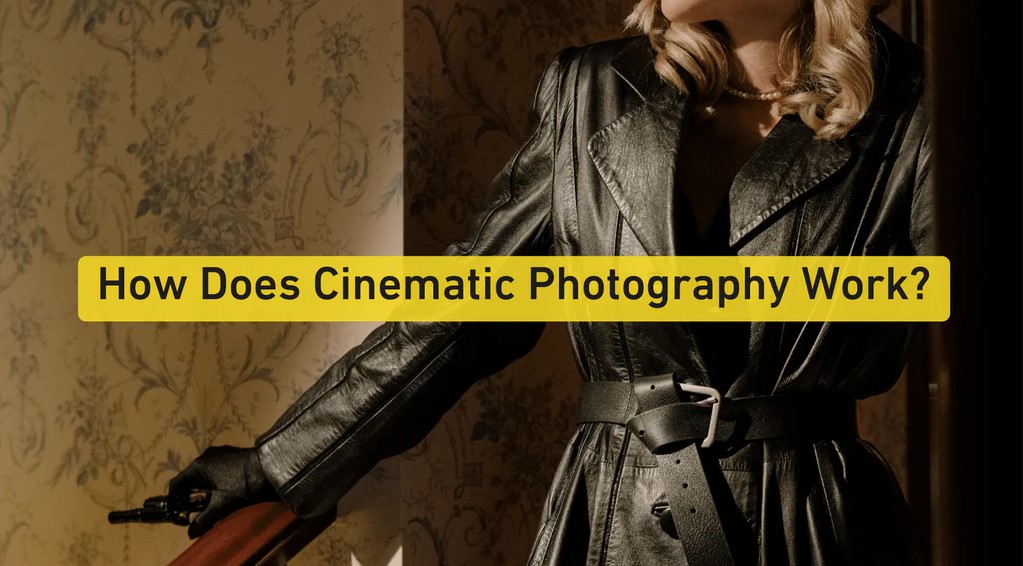university.nakul@gmail.com | Posted on

Cinematic photography is often referred to as "cinematic style" or "cinematic look". It's a pretty specialized technique of photography in a bid to reproduce all the characteristic visual aesthetics and storytelling techniques commonly seen in movies and television shows. This style is identifiable for dramatic lighting boosting mood, deep focus permitting to have sharp subjects on blurred backgrounds, rich colors with emotional depth, and a whole atmosphere of depth and movement into otherwise static photographs. A breakdown of how cinematic photography functions and what principles are in the effective delivery is written below:
1. Understanding the Cinematic Aesthetic
- Dramatic Lighting: Dramatic photography often involves the use of hard, directed light that creates sharp shadows and highlights that deepen and build dimension in the photo. Often achieved through natural light sources, studio lights, and/or speedlights.
- Deep Focus: Cinematography, wide depth of field provides the foreground and background equally well in focus. A very shallow depth of field, however, is often required in portrait photography instead.
- Rich Colors: Cinematographic color generally, has a wealth of well-saturated rich colors along with color grading with respect to establishing moods and scenes.
- Dynamic Composition: Cinematographic compositions often rely on the rule of thirds, leading lines, and other compositional elements to guide the audience's eye through the picture, thus creating a feeling of movement and storytelling.
2. Technical Aspects
- Camera and Lens Choice: Any camera will do for motion photography, but many prefer a full-frame camera as it captures a wider dynamic range and can operate at much lower noise levels. They also often use a wide-aperture lens, f/2.8 or better, in order to control depth of field and to achieve a shallow focus look when it is called for by the shot.
- Shutter Speed and ISO: To achieve a cinematic look in photographs, shutter speed is often slower for capturing motion blur, giving the image a sense of movement and drama. ISO is kept at a minimum to avoid noise in the image, especially when taken in low-light conditions.
- Aperture: Another factor that is considered is the aperture. A large aperture has a low f-number and results in a shallow depth of field, which is useful to isolate objects; conversely, a very high f-number, or a narrower aperture, will keep much more of the scene in focus. This effect is very commonly desired in cinematic photography.
3. Lighting Techniques
- Key Light: The main light source that illuminates the subject. It is often positioned to one side to create shadows and highlights, adding depth and dimension.
- Fill Light: Used to soften the shadows created by the key light, fill light can be natural or artificial and is often positioned opposite the key light.
- Backlight: Placed behind the subject, the backlight can create a rim of light around the subject, separating it from the background and adding a sense of depth.
- Ambient Light: The overall lighting of the scene, which can be controlled or enhanced to create a specific mood or atmosphere.
4. Post-Processing
- Color Grading: This involves adjusting the colors and tones of the image to create a specific mood or atmosphere. Common techniques include desaturating certain colors, adding a color tint, and adjusting the contrast and brightness.
- Sharpening and Noise Reduction: Cinematic images often benefit from selective sharpening to enhance details and noise reduction to clean up any grain or digital noise.
- Vignetting: Adding a vignette can draw the viewer’s attention to the center of the image, enhancing the focus on the subject.
- Dodge and Burn: These techniques involve selectively lightening or darkening parts of the image to create more dramatic lighting and shadows.
5. Narrative and Storytelling
- **Context - Setting: The location and environment where the photograph is taken can greatly influence the cinematic feel. Urban landscapes, dramatic natural settings, or even a simple, well-lit room can all contribute to the story.
- Characters: In cinematic photography, the subjects are often referred to as "characters." The way they are positioned, their expressions, and their interactions can tell a story within a single frame.
- Mood and Atmosphere: The overall mood of the image, whether it’s tense, calm, or mysterious, is crucial. This can be achieved through lighting, composition, and post-processing.
6. Inspiration and Practice
- Study Films and TV Shows: To better understand the cinematic style, watch films and TV shows with strong visual storytelling. Pay attention to how lighting, composition, and color are used to set the mood and tell the story.
- Practice: Like any skill, mastering cinematic photography takes practice. Experiment with different lighting setups, compositions, and post-processing techniques to find what works best for your vision.
7. Tools and Equipment
- Tripods and Stabilizers: To achieve sharp, stable images, especially in low light or with slow shutter speeds, a tripod or stabilizer is essential.
- Light modifiers: Softboxes, umbrellas, and diffusers can help control and soften light, creating more natural and flattering illumination.
- Reflectors: Used to bounce light back onto the subject, reflectors can help fill in shadows and balance the lighting.
Conclusion
Such work will be a presentation of technical skill with a splash of artistic vision and all-telling art. Knowing the rules of the composition, and lighting principles along with editing images makes images highly cinematic and depicts a story that is a little more profound and intriguing at the core. It doesn't matter whether one is into portraits or land studies, or work in still photography; there is the cinematic concept of bringing it close to people and enabling interaction beyond plain speaking.
0
0 Comment
